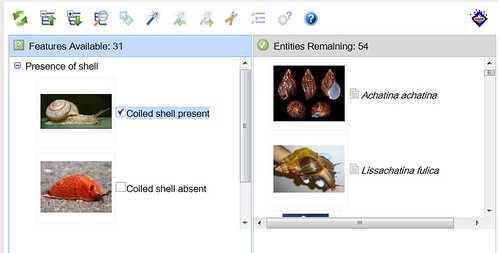USDA Blog Post:
Do you work at a port or international border where identifying potentially destructive agricultural pests is part of your job? Are you a student or teacher interested in learning more about potential and existing agricultural pests? Have you ever seen a creepy crawly thing in your backyard and wondered if it might be an invasive species? If you fit any of these descriptions, then ID Tools may be just what you need.
Created by USDA-APHIS’ Identification Technology Program (ITP), ID Tools helps agency staff to quickly identify pests, including insects, diseases, harmful weeds, and more, through an efficient, online database system. ID Tools currently includes more than 30 websites covering a vast array of pests and pests associated with specific commodities. These tools help to keep international cargo—and economic activity—moving as efficiently as possible at U.S. ports of entry. However, ITP’s ID Tools web site, which receives about 12,000 visitors a month, is not for experts alone.
“One of our main reasons for creating ID Tools is to empower non-experts—including students, educators, and the general public —with access to expert information,” said ITP Coordinator Dr. Terrence Walters. “With many experienced researchers, Extension specialists, pest identifiers, and other professionals retiring, we saw a crucial need to capture their identification expertise in digital format and provide it to the next generation before it was too late.”
Using identification key software called “Lucid,” users select a specimen’s distinguishing characteristics (e.g., color, shape, size) with the aid of illustrations and photographs; they don’t need to know the scientific terms for the specimen’s anatomy. Each characteristic they choose can eliminate up to hundreds of possibilities and lets them quickly narrow the search to the exact species. Users will find Lucid keys in the majority of the tools.
For example, if you wanted to use ID Tools to identify a terrestrial mollusc (think slugs and snails) that you believe is a pest species, you would first choose whether the creature has a shell. This choice immediately narrows down the possibilities, making the system vastly more efficient than a text version. That efficiency is especially important if you are using the ID Tools’ Terrestrial Mollusc Tool on the job.
If you feel that identifying characteristics is not your style, ID Tools offers users a wonderful diversity of other media to support the identification process. Many of the tools contain an image gallery, glossary, visual dictionary, and species fact sheets with descriptions and diagnostic images.
Try out ID Tools for yourself by clicking this link to explore ITP’s many digital pest identification pest products. Contact itp@aphis.usda.gov to be kept informed on the latest tool releases from ITP.

Screen shot of a Lucid key for identifying land snails and slugs.
No comments:
Post a Comment
Note: Only a member of this blog may post a comment.